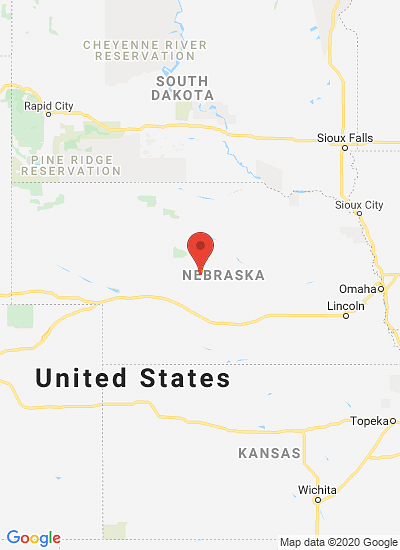Conagra Foods sign in Omaha.
Conagra Foods announces results F2016 Q3; Separation into Lamb Weston and Conagra Brands is on track

Today ConAgra Foods, Inc. (NYSE: CAG) reported results for the fiscal 2016 third quarter ended February 28, 2016.
Highlights
(% cited indicates change vs. year-ago amounts, where applicable. SG&A refers to selling, general, and administrative expense, and COGS refers to cost of goods sold)
Diluted EPS from continuing operations as reported was $0.41, compared with $0.49 in the year-ago period.
After adjusting for items impacting comparability, diluted comparable EPS of $0.68 this quarter was ahead of $0.59 in the year-ago period. As previously communicated, guidance for this quarter, as well as the basis for comparison in the year-ago period, included contribution from discontinued operations. Current quarter diluted EPS from discontinued operations (amounting to $0.05 as reported, and $0.11 adjusted for items impacting comparability) reflects about two months of results from the divested private label operations and includes approximately $36 million of pretax benefit, or $0.05 per diluted share of after-tax benefit, from the absence of private label-related depreciation and amortization expense. As previously discussed, this is due to the classification of the private label assets as held for sale during the quarter. The private label operations were divested during the quarter.
Consumer Foods improved comparable operating margins by over 300 basis points and drove strong double-digit comparable operating profit growth with a deliberate focus on price/mix, good productivity, and favorable input costs.
Commercial Foods posted comparable operating profit growth in excess of 20% and expanded margins, reflecting volume increases across the segment as well as lower costs. Lamb Weston posted good volume performance, reflecting the lapping of the impact of the West Coast port labor dispute. The company completed the divestiture of the private label business during the quarter, receiving in excess of $2.6 billion in proceeds. The company has utilized a significant portion of the proceeds to reduce debt by approximately $2.15 billion so far, and as part of a balanced capital allocation program plans to utilize more of the remaining proceeds for further debt reduction. The company is committed to an investment grade credit rating.
CEO Perspective
Sean Connolly, CEO of ConAgra Foods:
Overall Quarterly Results
For the fiscal 2016 third quarter ended February 28, 2016, diluted earnings per share from continuing operations were $0.41 as reported, vs. $0.49 for the third quarter of fiscal 2015. After adjusting for items impacting comparability, comparable diluted EPS was $0.68 this quarter and $0.59 in the year-ago period. Items impacting comparability are summarized and reconciled for Regulation G purposes starting on page 10.
Consumer Foods Segment
Branded food items sold worldwide in retail channels
The Consumer Foods segment posted sales of approximately $1.9 billion and operating profit of $291 million in the fiscal third quarter, as reported. Sales declined 2%, with a 4% volume decrease, 3% favorable price/mix, and a negative 1% impact of foreign exchange (all rounded) compared to year-ago period amounts.
The company has emphasized margins over volume this fiscal year as part of building a healthy foundation. In connection with this, the company has implemented changes to improve the efficiency of trade spending, increased list prices on Banquet products and other brands in connection with product improvements and selected commodity pass-through, and focused on improving mix. These factors played a significant role in the quarter’s 4% volume decline and significant margin expansion.
Brands posting sales growth for the quarter include Marie Callender’s, Hunt’s, Slim Jim, Reddi-wip, Ro*Tel, PAM, and others. Other brand details are in the written Q&A document accompanying this release. Segment operating profit was $291 million versus $266 million in the year-ago period, as reported. After adjusting for $48 million of net expense in the current quarter, and $23 million of net expense in the year-ago period from items impacting comparability, current quarter comparable operating profit of $339 million increased 17% over comparable year-ago amounts. Comparable operating margin expanded by over 300 basis points. In addition to the benefits of price/mix, good productivity and overall lower commodity input costs also contributed to the strong quarterly profit performance. Advertising investment increased $10 million, or 12% compared to year-ago period amounts, as part of our strategy to increase support behind high-potential brand equities. Foreign exchange negatively impacted profitability by approximately $12 million this quarter. Year-ago profit included a significant hedge loss, which favorably impacted the comparison this quarter.
Commercial Foods Segment
Specialty potato, seasonings, blends, flavors, and bakery products, as well as consumer branded and private label packaged food items, sold to restaurants, foodservice and commercial channels worldwide.
Sales for the Commercial Foods segment were $1.1 billion, up 6% over year-ago amounts (rounded). Sales for Lamb Weston’s potato operations grew across North America as well as in international markets. International sales performance for Lamb Weston was notably strong, reflecting the lapping of the impact of the West Coast port labor dispute in the year-ago period, as well as improving demand across several international markets.
Segment operating profit of $175 million increased 21% from year-ago period amounts. Lamb Weston made the most significant contribution to the segment’s profit increase, reflecting increased global volumes, due in part to the benefit of lapping the West Coast port labor dispute. Profits for the remainder of the segment grew modestly.
Highlights
(% cited indicates change vs. year-ago amounts, where applicable. SG&A refers to selling, general, and administrative expense, and COGS refers to cost of goods sold)
Diluted EPS from continuing operations as reported was $0.41, compared with $0.49 in the year-ago period.
After adjusting for items impacting comparability, diluted comparable EPS of $0.68 this quarter was ahead of $0.59 in the year-ago period. As previously communicated, guidance for this quarter, as well as the basis for comparison in the year-ago period, included contribution from discontinued operations. Current quarter diluted EPS from discontinued operations (amounting to $0.05 as reported, and $0.11 adjusted for items impacting comparability) reflects about two months of results from the divested private label operations and includes approximately $36 million of pretax benefit, or $0.05 per diluted share of after-tax benefit, from the absence of private label-related depreciation and amortization expense. As previously discussed, this is due to the classification of the private label assets as held for sale during the quarter. The private label operations were divested during the quarter.
Consumer Foods improved comparable operating margins by over 300 basis points and drove strong double-digit comparable operating profit growth with a deliberate focus on price/mix, good productivity, and favorable input costs.
Commercial Foods posted comparable operating profit growth in excess of 20% and expanded margins, reflecting volume increases across the segment as well as lower costs. Lamb Weston posted good volume performance, reflecting the lapping of the impact of the West Coast port labor dispute. The company completed the divestiture of the private label business during the quarter, receiving in excess of $2.6 billion in proceeds. The company has utilized a significant portion of the proceeds to reduce debt by approximately $2.15 billion so far, and as part of a balanced capital allocation program plans to utilize more of the remaining proceeds for further debt reduction. The company is committed to an investment grade credit rating.
CEO Perspective
Sean Connolly, CEO of ConAgra Foods:
“Our results for the quarter exceeded our expectations as our actions to drive improved profitability continued to take hold. Our focus on improving price/mix and driving efficiencies is enabling us to enhance our overall fundamentals in both of our segments resulting in solid comparable operating profit growth and expanding operating margins.”
“With the sale of our private label business completed, we are focused on successfully executing our plans to reduce costs and deliver improved price/mix, while continuing to segment our portfolio to enable more impactful marketing and support investments to drive future innovation and deliver improved margins and shareholder value. We are on track to establish two independent segments with excellent operating foundations as we separate into two pure-play companies in the fall.”
Overall Quarterly Results
For the fiscal 2016 third quarter ended February 28, 2016, diluted earnings per share from continuing operations were $0.41 as reported, vs. $0.49 for the third quarter of fiscal 2015. After adjusting for items impacting comparability, comparable diluted EPS was $0.68 this quarter and $0.59 in the year-ago period. Items impacting comparability are summarized and reconciled for Regulation G purposes starting on page 10.
Consumer Foods Segment
Branded food items sold worldwide in retail channels
The Consumer Foods segment posted sales of approximately $1.9 billion and operating profit of $291 million in the fiscal third quarter, as reported. Sales declined 2%, with a 4% volume decrease, 3% favorable price/mix, and a negative 1% impact of foreign exchange (all rounded) compared to year-ago period amounts.
The company has emphasized margins over volume this fiscal year as part of building a healthy foundation. In connection with this, the company has implemented changes to improve the efficiency of trade spending, increased list prices on Banquet products and other brands in connection with product improvements and selected commodity pass-through, and focused on improving mix. These factors played a significant role in the quarter’s 4% volume decline and significant margin expansion.
Brands posting sales growth for the quarter include Marie Callender’s, Hunt’s, Slim Jim, Reddi-wip, Ro*Tel, PAM, and others. Other brand details are in the written Q&A document accompanying this release. Segment operating profit was $291 million versus $266 million in the year-ago period, as reported. After adjusting for $48 million of net expense in the current quarter, and $23 million of net expense in the year-ago period from items impacting comparability, current quarter comparable operating profit of $339 million increased 17% over comparable year-ago amounts. Comparable operating margin expanded by over 300 basis points. In addition to the benefits of price/mix, good productivity and overall lower commodity input costs also contributed to the strong quarterly profit performance. Advertising investment increased $10 million, or 12% compared to year-ago period amounts, as part of our strategy to increase support behind high-potential brand equities. Foreign exchange negatively impacted profitability by approximately $12 million this quarter. Year-ago profit included a significant hedge loss, which favorably impacted the comparison this quarter.
Commercial Foods Segment
Specialty potato, seasonings, blends, flavors, and bakery products, as well as consumer branded and private label packaged food items, sold to restaurants, foodservice and commercial channels worldwide.
Sales for the Commercial Foods segment were $1.1 billion, up 6% over year-ago amounts (rounded). Sales for Lamb Weston’s potato operations grew across North America as well as in international markets. International sales performance for Lamb Weston was notably strong, reflecting the lapping of the impact of the West Coast port labor dispute in the year-ago period, as well as improving demand across several international markets.
Segment operating profit of $175 million increased 21% from year-ago period amounts. Lamb Weston made the most significant contribution to the segment’s profit increase, reflecting increased global volumes, due in part to the benefit of lapping the West Coast port labor dispute. Profits for the remainder of the segment grew modestly.
Like to receive news like this by email? Join and Subscribe!
Get the latest potato industry news straight to your WhatsApp. Join the PotatoPro WhatsApp Community!
Highlighted Company
Sponsored Content
Sponsored Content
Sponsored Content
Sponsored Content











